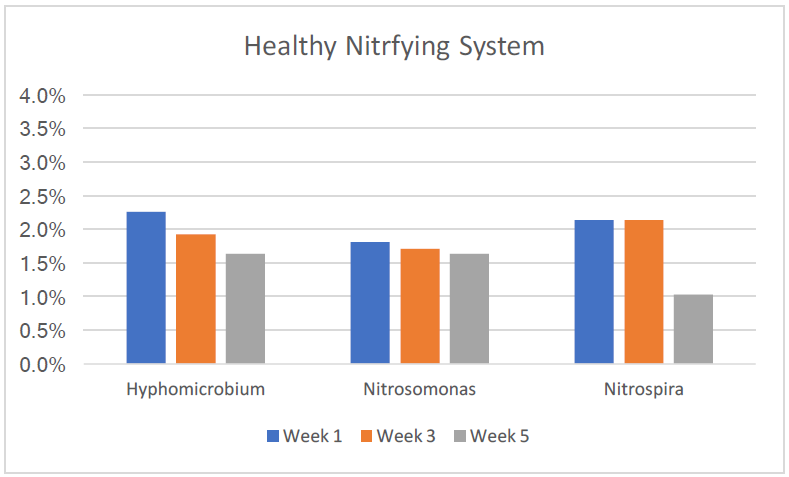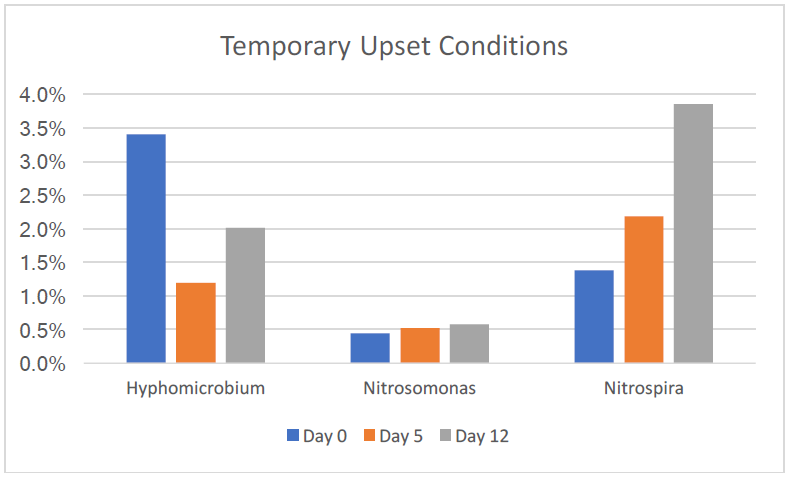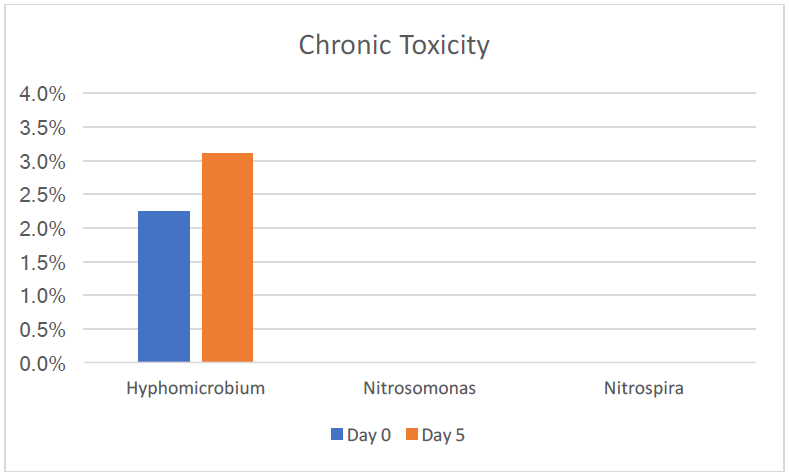Using Environmental Genomics (16s rDNA) testing to evaluate AOB Populations in WWTP
Published on by Erik Rumbaugh, Vice President at Aster Bio in Technology
Ammonia Oxidizing Bacteria (AOB) and Nitrite Oxidizing Bacteria (NOB) convert ammonia in wastewater to less toxic nitrate.
When compared with heterotrophic (COD reducing bacteria), both AOB and NOB are:
- Slower growing
- Obligate aerobes – under very low D.O. conditions metabolic activity stops
- Very sensitive to pH & require sufficient alkalinity be present
- Susceptible to inhibition by sulfides, phenols, cyanide, and many other common industrial wastewater components Aster Bio has performed time series testing on extended aeration activated sludge systems using our Environmental Genomics™ molecular diagnostics. We have found the most common AOB & NOB species present and in what relative predominance. While each system has a unique percentage of AOB & NOB based on influent makeup and system design/operations, Environmental Genomics™ gives vital information on changes in microbial populations due to operational changes or new influent components.
The following study includes industrial wastewater systems with multiple tests. The systems
testing include:
- Stable ammonia & nitrite removal
- Temporary loss of nitrification due to conditions inhibiting AOB & NOB growth (low D.O. & alkalinity) – alleviating these conditions restored nitrification by day 5 and allowed the AOB & NOB population to expand
- Chronic toxicity inhibiting AOB & NOB growth
Nitrosomonas and Nitrospira are the predominant AOB strains present in industrial wastewater.
Hyphomicrobium, which participates in denitrification, is a hardier organism that can handle adverse conditions. We include Hyphomicrobium as a relative internal standard.
Stable, Healthy System
System 1 was an industrial extended aeration wastewater treatment plant under relatively stable conditions. Ammonia and nitrite removal was within target parameters and exhibited
limited variation during the sampling period. The goal was to track natural variation in biomass microbial makeup.

Temporary Upset Conditions
The second system had a combination of increased ammonia loadings and aeration challenges supplying enough oxygen for the biomass. After initial samples, the facility added supplemental oxygen and increased alkalinity. Within 3 days, ammonia and nitrite numbers returned to normal. The AOB & NOB were present, but low metabolic activity was the problem. If operations continued with low D.O., the AOB & NOB populations would experience washout and recovery would be a more complex challenge.

Chronic Toxicity
AOB & NOB are subject to chronic toxicity from metals, fluorides, sulfides, and select organic compounds. The following system did not have any ammonia removal or nitrite/nitrate in the effluent. After initial 16s rDNA testing revealed no significant AOB or NOB populations, an analytical program to identify source of chronic toxicity was conducted.

Media
Taxonomy
- Bacteria
- Oxidation
- Nutrients Recovery
- Nutrient Recovery & Reuse
- Nutrient Reduction and Removal
3 Comments
-
This summary is valuable for the designers and operators of of processes.
Valuable reference to culture washout.
have you addressed combined bio-N cum bio- P cultures?
Is there a full Ref Document
-
A very interesting article and confirms the experience I have built up over a period of time. Ammonia oxidation only appears to be a problem on plants which have restricted oxygen levels. Even when the upsets take place there are often sufficient bacteria to recover. Because they fix their own carbon, they will require the dosing of carbonate or bicarbonate during and after an upset although they will normally find sufficient carbonate in the water. There are occasions when fresh bacteria will be required in an effluent plant but these have to be freshly made as they cannot be stored for any length of time.
-
Very interesting to Note that Nitrosomonas and Nitrospira are the predominant AOB strains present in industrial wastewater.